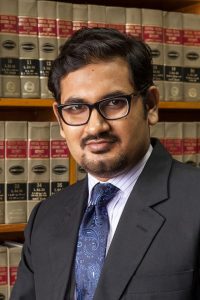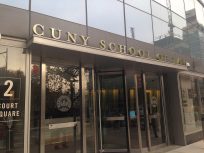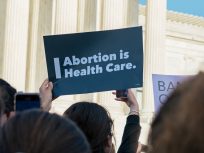
Nabil Ahsan is a practicing lawyer at the Supreme Court of Bangladesh and is an Associate at AF Hassan Ariff & Associates. His area of expertise is constitutional law.
‘Presumed innocent until proven guilty’ is a cardinal principle of most legal systems across the world including Bangladesh. Intertwined with the concept of presumed innocence is the concept of burden of proof. In criminal cases, the prosecution must prove beyond reasonable doubt that the accused is guilty as charged; if there is even some doubt about a person’s guilt he must be set free. Law students read these basic concepts in every law text book at the elementary stages of their legal education. Yet this somewhat seemingly academic issue of criminal jurisprudence can become irrelevant for the lay person in this communication driven world today particularly when a media trial takes place on a sensational matter.
Media trial is defined by the Indian Supreme Court as ‘the impact of the television and newspaper coverage on a person’s reputation by creating a widespread perception of guilt regardless of any verdict in a court of law”. The impact of a media trial is to cause prejudice and is an obstruction to the course of justice. In South Asia, media trials can also create undue pressure on judge’s ability to use their judgment independently, remarks one Indian Supreme Court Judge.
Recent controversy surrounding Tahmid Hasib and Hasnat Karim two victims/accused (their status is in dispute) of being involved in the Gulshan attack calls for reflection of the cardinal principles of criminal justice system and whether media trials have a potential to cause injustice in certain situations. It must also be stated in the same vein that looking at recent history, the social and mainstream media in Bangladesh have often raised voices against oppression and injustice and at times brought about substantive change to individual lives. Given media’s tradition of highlighting social issues of the day, it is important to be aware of how its reporting may impact the rights of accused.
In this instance, the controversy surrounding the role of the duo in the July 1 terrorist attack in Gulshan can be briefly summarized as follows: (i) there were rescued as victims after the joint forces operation and later held up by the police authority; (ii) Mysteriously the police kept making confusing statements about holding them in custody for a one whole month, sometimes admitting it and sometimes denying it. Their families maintain they were held in police custody all along. Article 33 (2) of the constitution states: “Every person who is arrested and detained in custody shall be produced before the nearest magistrate within a period of twenty four hours of such arrest, excluding the time necessary for the journey from the place of arrest to the Court of the magistrate, and no such person shall be detained in custody beyond the said period without the authority of a magistrate.” The Constitution does provide an exception for an “enemy alien” or for preventive detention, however, there is nothing to indicate that those exceptions were being invoked.
If police had suspicion about the role of duo in this attack, the legal process should have been to arrest them as a suspect and then interrogate them for the purposes of investigation. It is unclear why the police decided to ‘officially’ deny holding them in custody.
On August 5, 2016, they were mysteriously picked up from Dhaka by law enforcement authority and arrested under section 54 of the Code of Criminal Procedure. Section 54 gives wide power to police to arrest somebody for suspicion of any crime. It is a notorious provision and the court recently passed a landmark judgment criticizing abuse of section 54 by law enforcement authority and prescribing certain guidelines for exercise of Section 54 power. So at this point, they have not been arrested specifically in connection with Gulshan attack even after conducting a pre-arrest investigation, rather they have been arrested for suspicion of crime under the arbitrary policing power of section 54.
Immediately after their arrest, certain photos emerged in the media causing speculation and media trial of the duo. One is forced to wonder about the timing of the release of these photos matching up with their arrest! Even if the timing is purely coincidental, the ability of police to arrest without a specific crime as they gather evidence is more likely to undermine confidence in law enforcement, and the legal system. Criminal legal procedure is often mistaken solely to protect defendants, and so the public may not give it much importance, especially here where the duo are accused of terrorism but criminal procedure is important for a fair legal system.
In this instance, based on the photographic evidence, we have two possible narratives.
One is that Tahmid was carrying a gun and so he was involved in the attack. Hasnat’s body language was allegedly too comfortable in that situation, and his involvement with a banned organization Hizbut Tahrir makes the case and point that he was the master mind behind that attack . The counter narrative about Tahmid is that he was forced to carry an unloaded weapon and used as human shield. The counter narrative of Hasnat is unclear. He got sympathy or attention from nobody being condemned as guilty from day one based on his alleged association with Islamic groups. forThe media took no interest to get his word out. But he has made statements to the police about his explanation nonetheless. To reach a conclusive decision about their guilt one has investigate their previous backgrounds, record statements of eye witnesses who saw their activities on that day, allow the accused to give reasonable explanations to any incriminatory evidence against them and so on. It’s a tried and tested process which we have been following for years. At this point even the police maintains that they are merely investigating the matter and have no conclusive evidence against the duo.
Unfortunately, our over zealous media have taken it upon themselves to bypass the routine process and pass an expedited verdict of guilty.
The blame is not solely on the media, as their job is to report for the public, but because criminal procedure is not followed, and arrests can happen so easily, evidence gathered during an investigation can be leaked and shared in media. So, the public can form an opinion of the accused way before they set foot in court.
Hasnat and Tahmid now will go through a pre-trial investigation stage and possibly a second trial (the actual trial process) having been found guilty by the media in the first trial.
Media trials are taking new heights with each passing day. Perhaps this is an indication or a result of the failings of the justice system or perhaps it is merely unethical or bad journalism. One must at the same time keep in mind that in a nation where investigations are botched at the behest of the powerful few, where police conduct faulty investigations and where crucial evidence is destroyed by killing accused in the name of ‘cross fire’, ultimately it is media that is the lone vanguard protecting the rights of the common citizen. However, the media should exercise a degree of caution and refrain from publishing news based on conjecture and surmise in the hope of getting more readerships. Rather, journalists should remind themselves of their ethical and professional responsibilities every time they come up with an exclusive news item, keeping in mind that they ought not to replace fact with fiction.
Note: A version of this essay was published in Daily Star.




